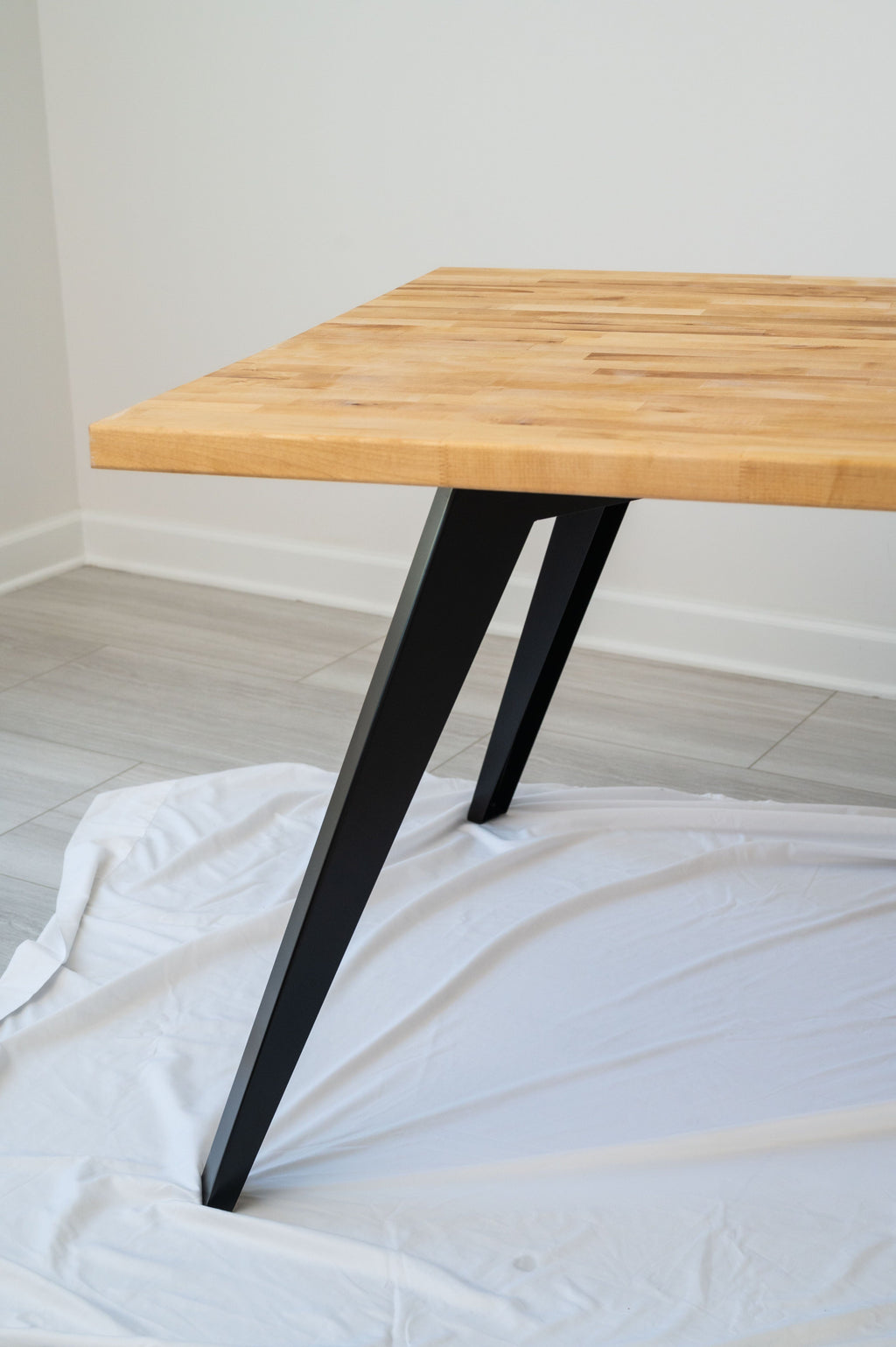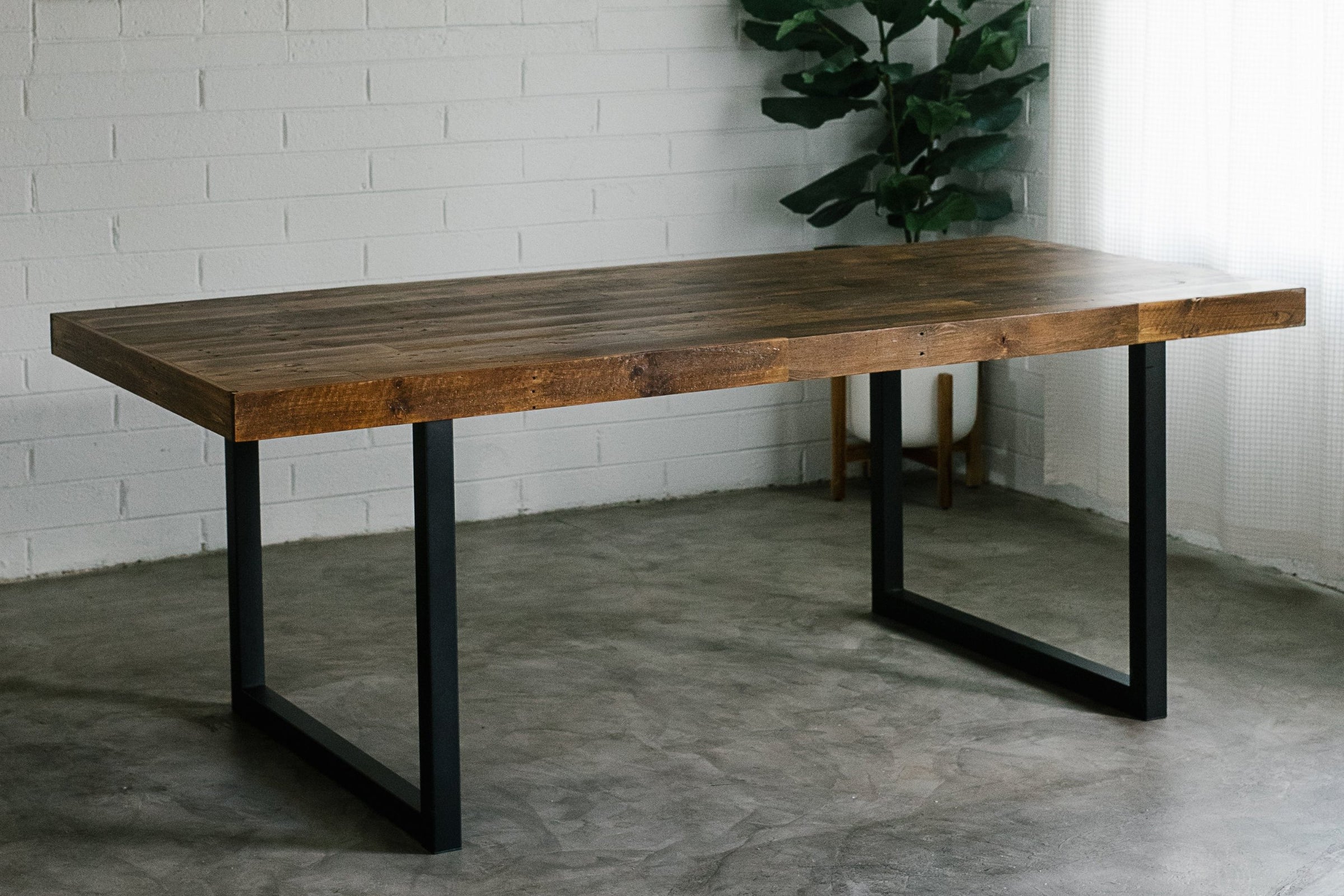Change Your Furnishings with Premium Dining Table Legs Wood Options
Change Your Furnishings with Premium Dining Table Legs Wood Options
Blog Article
What to Consider When Picking Dining Table Legs Timber for Your Home.
When selecting wood for eating table legs, several vital variables warrant careful consideration to guarantee both performance and visual charm. The kind of timber selected can dramatically affect the table's longevity, security, and total design, while the upkeep needs might impact long-lasting functionality.

Relevance of Wood Kind
When picking dining table legs, the option of timber kind plays a critical role in figuring out both aesthetics and sturdiness. Various timber species provide differing degrees of weight, resistance, and stamina to wear, which can considerably affect the performance and long life of the table. Woods such as maple, cherry, and oak are usually preferred for their robust nature and ability to endure everyday use. These woods not only offer structural stability however likewise withstand dents and scratches better than softer alternatives.
Conversely, softer woods like ache or poplar, while a lot more affordable, may not supply the very same level of resilience and might need more constant upkeep or replacement. The timber kind also affects the table's capability to endure ecological aspects such as humidity and temperature level changes. Furthermore, the selection of wood can influence the simplicity of finishing and tarnishing, which can be essential for accomplishing the wanted appearance.
Aesthetic Factors To Consider
The aesthetic charm of table legs considerably adds to the overall visual of the dining area. Dining Table Legs Wood. When choosing wood for dining table legs, the grain pattern, coating, and shade are crucial elements that can detract or improve from the area's design. Different timber kinds exhibit varying tones and textures; for instance, oak provides a traditional appearance with prominent grain, while walnut uses an abundant, dark elegance
Additionally, the shape of the legs plays a critical role in defining the table's character. Smooth, minimal legs can develop a contemporary feel, while much more elaborate, transformed legs stimulate typical charm. The style of the legs ought to balance with existing furnishings and the general motif of the area, whether it be rustic, modern-day, or transitional.
It is also vital to think about exactly how the legs engage with various other furnishings items, consisting of sideboards and chairs. A natural style not just raises the dining experience however likewise contributes to the home's general aesthetic coherence. Ultimately, the selection of table legs should be a thoughtful decision that mirrors individual preference while making certain aesthetic harmony within the area.

Resilience and Security
Resilience and security are critical elements in the option of table legs, as they directly influence the durability and security of the furnishings. When choosing wood for dining table legs, one should take into consideration the integral homes of different timber kinds. Woods, such as oak, cherry, and maple, are commonly favored for their toughness and resistance to put on, making them ideal for high-traffic eating locations.
In enhancement to the kind of timber, the construction method also plays a significant role in the overall stability of the table. Legs that are solidly created, either click here to read via traditional joinery strategies or modern-day design approaches, will certainly supply improved support and avoid wobbling. It is vital to assess the thickness and design of the legs; thicker legs are generally extra secure and can stand up to higher weight.
Furthermore, the environmental conditions in which the dining table will certainly be utilized can impact sturdiness. Wood that has actually been effectively dealt with for moisture resistance will certainly execute much better in humid environments. Inevitably, selecting the best mix of long lasting wood and stable building and construction will certainly guarantee that your table stays a functional and secure focal point in your home for many years ahead.
Upkeep Demands
Picking eating table legs made from long lasting wood is simply the start; comprehending maintenance requirements is just as crucial to maintain their look and capability. Various wood types require differing levels of treatment, so it is vital to recognize what is required for your specific selection.
Normal cleaning is basic; utilize a soft, wet fabric to remove dust and particles. Stay clear of harsh chemicals that can harm the finish. For wood coatings like varnish or lacquer, periodic brightening with furniture wax can enhance luster and give a protective layer versus scrapes.
Preventative procedures are essential also. Usage placemats and coasters to stay clear of straight contact with damp or hot items, which can warp or discolor the timber. Additionally, think about putting really felt pads under the legs to prevent scratches on your floor covering and lower wear on the wood
Humidity control is one more substantial factor; maintaining a steady atmosphere aids to avoid warping and breaking. If your eating location is vulnerable to variations in temperature level and moisture, consider utilizing a humidifier or dehumidifier as needed.
Spending Plan and Price Factors
When planning to purchase table legs, understanding budget and price variables is vital to make an informed decision. The sort of timber picked for the legs dramatically affects the general cost. Hardwoods, such as oak or walnut, tend to be more expensive than softwoods like ache, as a result of their longevity, visual charm, and shortage. Additionally, consider whether you are acquiring pre-made legs or deciding for custom layouts, as modification typically incurs higher prices.
Labor and craftsmanship also play a crucial role in the total expense. Handmade or artisan-crafted legs might carry a costs price, showing the ability and time purchased their production. It's essential to analyze the balance between top quality and cost; spending more in advance can bring about a you could check here longer-lasting product that needs much less maintenance gradually.
Verdict
In summary, choosing the ideal wood for eating table legs requires careful factor to consider of various variables, including timber kind, aesthetic allure, sturdiness, budget plan, and upkeep restrictions. The option of woods such as oak and maple can improve both toughness and aesthetic allure, while softer timbers might be extra economical but less enduring. Ultimately, a well-informed decision concerning material choice will contribute to the overall performance and longevity of the dining table, guaranteeing an important investment for the home.
When selecting wood for eating table legs, numerous crucial factors warrant mindful factor to consider to make sure both performance and aesthetic appeal.When selecting eating table legs, the selection of timber type plays an important function website here in identifying both visual appeals and sturdiness. When selecting timber for eating table legs, the grain finish, pattern, and shade are pivotal components that can take away or boost from the space's style. When choosing timber for eating table legs, one should consider the integral buildings of different wood kinds.In summary, picking the proper wood for eating table legs demands cautious consideration of numerous elements, consisting of wood kind, aesthetic allure, upkeep, resilience, and spending plan restraints.
Report this page